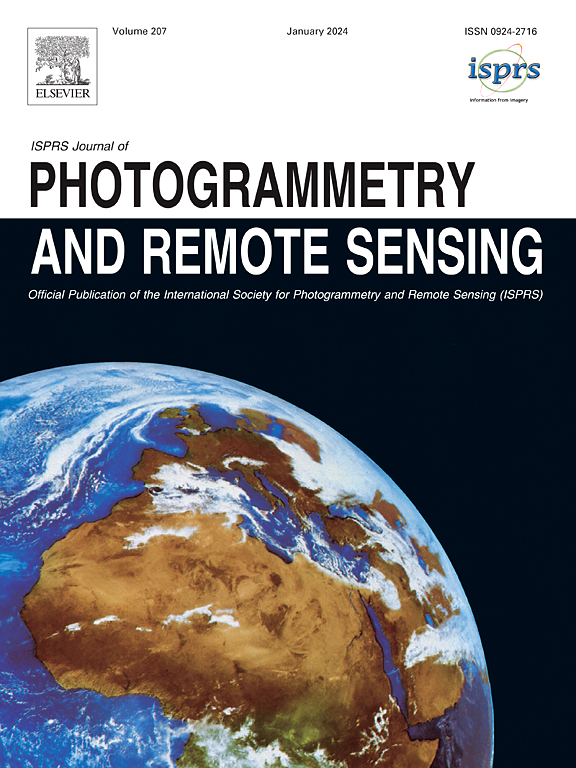Remote sensing scene graph generation for improved retrieval based on spatial relationships
IF 10.6
1区 地球科学
Q1 GEOGRAPHY, PHYSICAL
ISPRS Journal of Photogrammetry and Remote Sensing
Pub Date : 2025-02-01
DOI:10.1016/j.isprsjprs.2025.01.012
引用次数: 0
Abstract
RS scene graphs represent RS scenes as graphs with objects as nodes and their spatial relationships as edges, playing a crucial role in understanding and interpreting RS scenes at a higher level. However, existing RS scene graph generation methods, relying on deep learning models, face limitations due to their dependence on extensive relationship labels, restricted generation accuracy, and limited generalizability. To address these challenges, we proposed a spatial relationship computing model based on prior geographic information knowledge for RS scene graph generation. We refer to the RS scene graph generated using our method as SG-SSR for short. Furthermore, we investigated the application of SG-SSR in RS scene retrieval, demonstrating improved retrieval accuracy for spatial relationships between entities. The experiments show that our scene graph generation method does not rely on relationship labels, and has higher generation accuracy and greater universality. Moreover, the retrieval method based on SG-SSR outperformed other retrieval methods based on image feature vectors, with a retrieval accuracy index 0.098 higher than the alternatives(RemoteCLIP(mask)). The dataset and code are available at https://gitee.com/tangjiayitangjiayi/sg-ssr.
求助全文
约1分钟内获得全文
求助全文
来源期刊

ISPRS Journal of Photogrammetry and Remote Sensing
工程技术-成像科学与照相技术
CiteScore
21.00
自引率
6.30%
发文量
273
审稿时长
40 days
期刊介绍:
The ISPRS Journal of Photogrammetry and Remote Sensing (P&RS) serves as the official journal of the International Society for Photogrammetry and Remote Sensing (ISPRS). It acts as a platform for scientists and professionals worldwide who are involved in various disciplines that utilize photogrammetry, remote sensing, spatial information systems, computer vision, and related fields. The journal aims to facilitate communication and dissemination of advancements in these disciplines, while also acting as a comprehensive source of reference and archive.
P&RS endeavors to publish high-quality, peer-reviewed research papers that are preferably original and have not been published before. These papers can cover scientific/research, technological development, or application/practical aspects. Additionally, the journal welcomes papers that are based on presentations from ISPRS meetings, as long as they are considered significant contributions to the aforementioned fields.
In particular, P&RS encourages the submission of papers that are of broad scientific interest, showcase innovative applications (especially in emerging fields), have an interdisciplinary focus, discuss topics that have received limited attention in P&RS or related journals, or explore new directions in scientific or professional realms. It is preferred that theoretical papers include practical applications, while papers focusing on systems and applications should include a theoretical background.
 求助内容:
求助内容: 应助结果提醒方式:
应助结果提醒方式:


